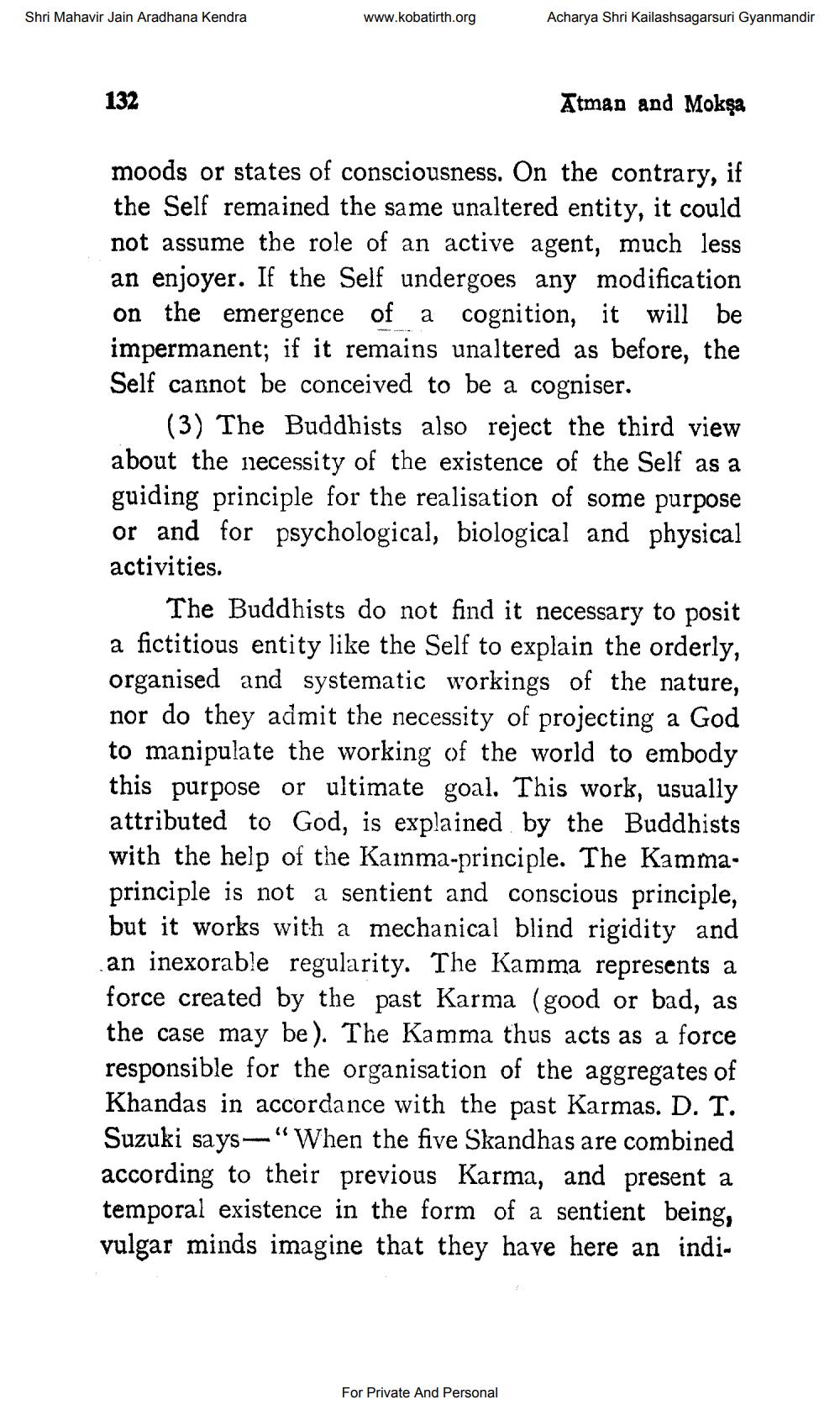________________
Shri Mahavir Jain Aradhana Kendra
www.kobatirth.org
Acharya Shri Kailashsagarsuri Gyanmandir
132
Atman and Mokşa
moods or states of consciousness. On the contrary, if the Self remained the same unaltered entity, it could not assume the role of an active agent, much less an enjoyer. If the Self undergoes any modification on the emergence of a cognition, it will be impermanent; if it remains unaltered as before, the Self cannot be conceived to be a cogniser.
(3) The Buddhists also reject the third view about the necessity of the existence of the Self as a guiding principle for the realisation of some purpose or and for psychological, biological and physical activities.
The Buddhists do not find it necessary to posit a fictitious entity like the Self to explain the orderly, organised and systematic workings of the nature, nor do they admit the necessity of projecting a God to manipulate the working of the world to embody this purpose or ultimate goal. This work, usually attributed to God, is explained by the Buddhists with the help of the Kamma-principle. The Kammaprinciple is not a sentient and conscious principle, but it works with a mechanical blind rigidity and an inexorable regularity. The Kamma represents a force created by the past Karma (good or bad, as the case may be). The Kamma thus acts as a force responsible for the organisation of the aggregates of Khandas in accordance with the past Karmas. D. T. Suzuki says—“When the five Skandhas are combined according to their previous Karma, and present a temporal existence in the form of a sentient being, vulgar minds imagine that they have here an indi
For Private And Personal




